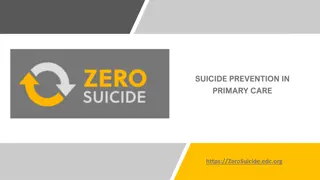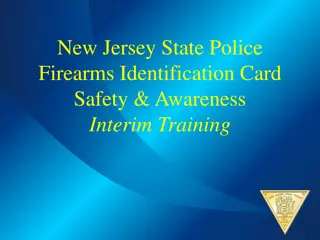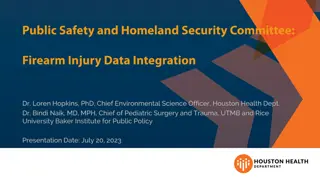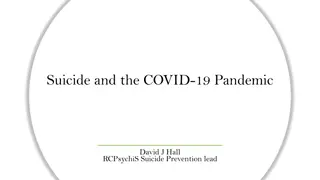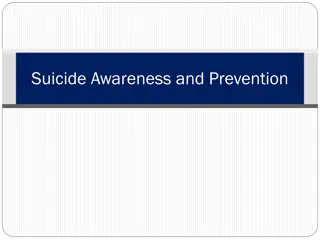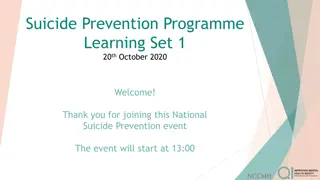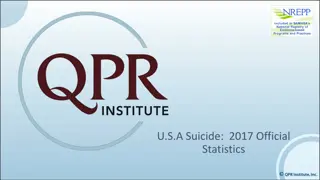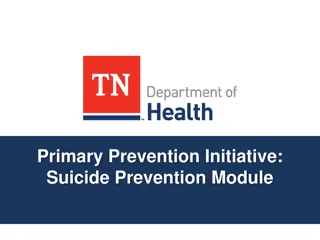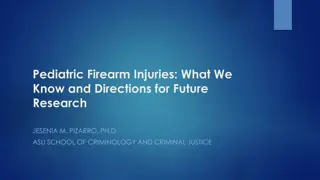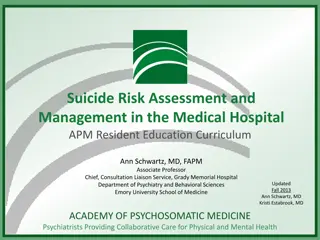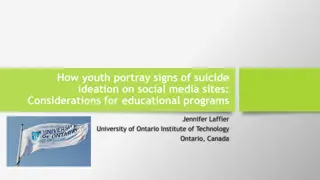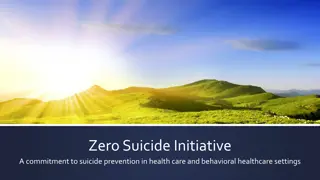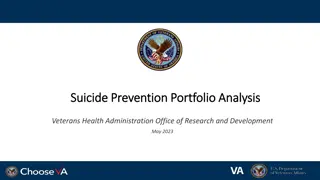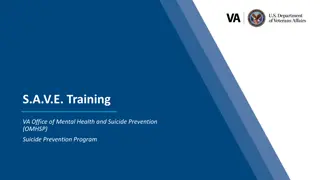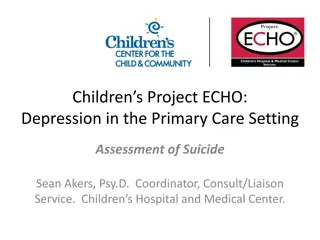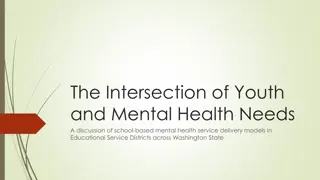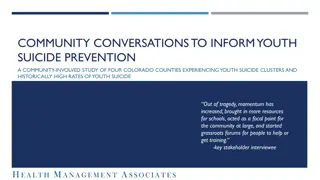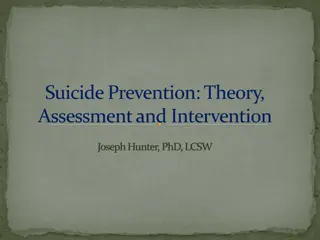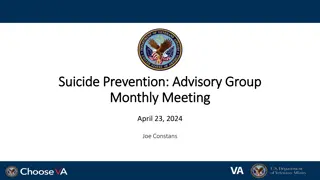Firearm Owners and Suicide Prevention: A Brief Module for Training Classes
Protect your loved ones by understanding the importance of suicide prevention among firearm owners. Explore key statistics, strategies like time and distance, and why means matter in suicidal crises to save lives. Gain insights into the rapid transition from suicidal thoughts to actions and the significance of intervention methods.
Download Presentation

Please find below an Image/Link to download the presentation.
The content on the website is provided AS IS for your information and personal use only. It may not be sold, licensed, or shared on other websites without obtaining consent from the author.If you encounter any issues during the download, it is possible that the publisher has removed the file from their server.
You are allowed to download the files provided on this website for personal or commercial use, subject to the condition that they are used lawfully. All files are the property of their respective owners.
The content on the website is provided AS IS for your information and personal use only. It may not be sold, licensed, or shared on other websites without obtaining consent from the author.
E N D
Presentation Transcript
Firearm Owners and Suicide Prevention A Brief Module for Firearm Training Classes
Protecting your family involves more than keeping them safe from accident or attack.
U.S. Firearm Deaths, 2011 2015 62% of firearm deaths in the U.S. are suicides. 105,183 60,162 2,719 1,337 Undetermined Unintentional Homicide and Legal Intervention Suicide Source: CDC WONDER website (official mortality data)
U.S. Suicide & Homicide Rates 16.0 Suicide 14.0 12.0 10.0 8.0 Homicide 6.0 4.0 2.0 0.0 Rates are the number of deaths for every 100,000 people in the U.S. The graph includes suicides and homicides by all methods. In 2015, 50% of suicides and 73% of homicides in the U.S. were by firearms.
Time & Distance Putting time & distance between a suicidal person and a gun may save a life. But won t they just substitute another method? Some may, but nearly anything else is less likely to kill. Others may delay their attempt. Either way, the odds of survival go up, for three reasons
Why Means Matter 1. Suicidal crises are often brief. 2. The deadliness of an attempt depends in part on the method used. 3. 90% of those who attempt suicide and survive don t go on to kill themselves even those making very serious attempts.
Suicidal Crises People admitted to a hospital after an attempt were asked how long they had been thinking about suicide before the attempt. 48% said ten minutes or less. Most people who become suicidal have struggled with ongoing, underlying problems. But the movement from suicidal idea to action is sometimes rapid.
Why Means Matter 1. Suicidal crises are often brief. 2. The deadliness of an attempt depends in part on the method used. 3. 90% of those who attempt suicide and survive don t go on to kill themselves even those making very serious attempts.
Protecting One Another Having access to a firearm during a suicidal crisis increases the odds that an attempter will die. We can protect one another. Be alert to signs of suicide in friends and family. If someone is at risk, help keep guns from them until they recover. It s likeholding a friend s car keys when they re drunk.
Whos at Risk of Suicide? People who struggle with depression, substance abuse, or other mental health problems, especially if they re also facing a painful crisis like a relationship break-up, arrest, trouble at work, or financial crisis problems that make you feel hopeless and trapped. Teens at home? Teens who die by suicide may show few or no warning signs. A wise precaution: store all guns locked if you have children at home especially teenagers and make sure they don t know where the keys or combination are.
Storage Options If a household member is at risk of suicide, you could store guns away from home until they ve recovered (e.g., with a relative you trust, at a storage unit) Or change the locks and make sure they can t find the keys/combination. Another option: don t keep ammunition at home until they ve recovered. Hiding guns isn t recommended. Family members tend to know one another s hiding places. If it s a friend at risk, offer to hold onto their guns.* *Unless this is not legal under your state laws.
What if its You at Risk? If you feel yourself spiraling down, take precautions before things get to a crisis point. Any strategy that builds some time between you and a gun in a suicidal crisis will keep you safer. Store your guns off-site temporarily, or ask someone you trust to hold onto the keys, or store the keys somewhere they re not available in a crisis like a bank safe deposit box, or disassemble the guns. These are temporary measures until you ve recovered.
Getting Help National Suicide Lifeline: 1-800-273-TALK (8255) [Placeholder for local resources]
Protecting our Freedom Gun-owning families can bring down the number of firearm suicides. We can do it without government mandates. Together, we can protect our family, our friends, and our freedom.


